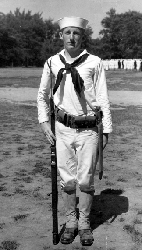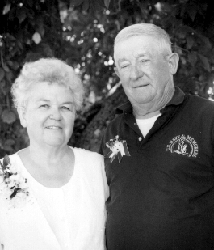The following are some excerpts from the story of George Kinsler's chapter in The Hero Next DoorTM.
Japs weren't the only danger for the men, like George Kinsler, who flew in rescue planes in the Pacific Theater during World War II. The Pacific Ocean itself could prove dangerous enough.
Landing an aircraft on the large swells of the Pacific Ocean to pluck downed pilots from the water and stranded Marines from desolate islands presented its own peril Kinsler recalls of his time aboard the PBY aircraft, nicknamed "Dumbos" for their elephant-like appearance.
"Dumbo" rides to rescue downed airmen and wounded soldiers in the South Pacific were no "day at the circus" for PBY crews.
"If you had good water, like in harbors, you could do a hot land which was like using the water as a runway, but most of the time in rescue work you were trying to land on the swell of a wave; if you missed, you could be in trouble."
Kinsler recalls one Dumbo mission that especially looked bad when his PBY arrived at the scene.
"We were sent out to rescue a fighter pilot who was in the water off a small island south of Guadalcanal in August, 1943. The fighter pilot later told us that he was checking out a new P-39 and fell out of the plane when he rolled it over because he had forgotten to close the hatch and fasten his seatbelt! He was lucky to have landed close to an island. We arrived to see that he had made it to the beach. We also found that the wind speed was rising and there were five- to eight-foot swells.
"Our pilot, Lt. Norris figured we could land but would find it very difficult to get back off the water. About then he noticed a small lagoon about two miles down the island from where the pilot was and decided to try to land and use the lagoon for a take off. Then, two of usthis time, myself and another mechanic Taylorwould take our five-man raft to the island and get to the pilot.
"We had noted that the pilot on the beach was trying to launch his own small seat raft to come to us but he couldn't beat the winds and swells, so bringing our bigger raft to him was looking more and more dangerous. But it was the only way to get him to the plane so that was the basic plan.
"Our pilot decided to stall the PBY about ½-mile out in the ocean. He did a great job and we dropped on a large swell. We only popped a few rivets but we plugged them with golf tees (which we carried for this purpose). The props on the engine were biting into the water as we bobbed up and down and the wind and swells caused the plane to take water over the front turret.
"We made it as close to the beach as was safe. When we were just about to inflate the raft for what would surely be a dangerous attempt for Taylor and I to get the pilot, we noted a large, native canoe coming with about 14 men paddling it. We had not seen it from the air. It had extremely high ends on it and could handle the swells and wind a lot better than a raft.
"These natives went in and picked up the pilot and brought him out to us. Thank God, as I doubt that we could have fought our way back to the plane against the swells and wind. Fortunately, the natives on this island were friendly to us. Most natives were friendly but they weren't friendly on every island.
"In fact, we generally carried large cans of Spam and gallons of fruit cocktail that we would drop to the natives whenever we would see them while on patrol as a way to thank them for their support of us and encourage their friendliness.
"We had about eight gallons of fruit cocktail in the plane this trip and we gave it all to this one group of natives, along with other odds and ends, for helping us out of this dangerous situation."
The danger was far from over. The PBY still had to fly out of that small lagoon.
"The plan was that as soon as we entered the lagoon we would drop two sea anchors over one side and ole' Georgemewould get out on the wing on that same side and put the float in the water. Then, pilot Norris would gun the other engine. As the plane came around, I would run down the wing and get in the plane so Norris could hit the engine wide open, find a swell, and we'd be in the air.
"The plan was good but when we got to the opening of the lagoon it was smaller than our wing span! As we went through the opening our pontoons were dragging in the mud but a big swell lifted us over and into the lagoon. We carried out the plan as the plane came around, they dumped the sea anchors and I ran down the wing and got in the blister. Norris hit the throttle and we were in the air on the first swell thanks to the skill of our pilot and a crew that worked together as a team. It was quite an effort and shows how important everyone was to the success and safety of a mission."
This is but a small part of George Kinsler's story. Read more about his PBY search and rescue missionsincluding his participation in one of the Bermuda Triangle's greatest mysteriesin The Hero Next DoorTM.




